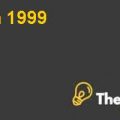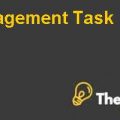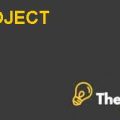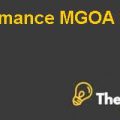
Eli Lilly Case Solution
Questions:
1) What is Eli Lilly’s strategy? What strategic challenges does the company face?
Ans:Eli Lilly's strategy is based on the end user of the product—human or animal. Its animal drugs contribute less percentage of its sales therefore,we will focus on the segmentation for humans. Lilly focuses on introducing drugs in therapeutic classes with the greatest market perspective. This could be achieved in two ways; either the market does not already have an existing therapy, or the amount of the market allows the potential for more than one therapy. Due to the market potential associated with disease management, Lilly segments its market in the following therapeutic classes: endocrinology, cardiovascular, contagious disease, neuroscience, oncology, and osteoporosis. In each of these categories, Lilly sells two or more drug products and plans to introduce several products in these classes within the next two years. Lilly commercializes drug products outside the scope of these therapeutic classes when there is an unmet medical need, or its product performs better than currently available drug therapies. This allows Lilly to maximize its profit pool by being the only provider of a drug treatment for a limited period. Eli Lilly meets all three criteria; quality, innovation, and responsiveness to customers for a differentiated strategy. Its products will be perceived as unique by customers as they are mostly new or improved products that meet some major medical ailment. As stated earlier, it strives to be a leader in many areas of the pharmaceutical market by providing products to meet a variety of medical conditions.
CHALLENGES:
- BIOTECH THREAT
The generic drug makers are testing the big pharmaceutical companies as well as they are capitalizing on the negative social perceptions of the pharmaceutical manufacturers, as a result making enormous amount of profit at the expense of the consumer. They have been successful in rallying consumer advocacy groups by spreading the message that patent protection stalls the arrival of less expensive drug alternatives. From a social point of view, the healthcare environment has been requiring an overhaul for several years. This is a massive undertaking that will have direct implications on pharmaceutical manufacturers as MCOs continue to pressure them for better pricing.
- TECHNOLOGICAL ENVIRONMENT
Danger from the technological environment for the pharmaceutical industry is the shock of biotechnology. Due to the bust of the dot.com era, venture capitalists (VCs) have been willing to return to stable investments in companies that have available products and business model. The biotechnology division has gained much attention from VCs and is reaping the benefits of significant capital investments, as a result this has made the biotech firms to carry on investing in new research and development as a number of their other drug therapies act up along the clinical trial phases. There are now over 300 openly traded companies in the United States developing novel medicines using biotechnology.
- POLITICAL AND LEGAL FACTORS
Policy and legal factors also have a substantial effect on the level of opportunities and threats in the environment. Since the FDA has a primary role in regulating the pharmaceutical industry, however this organization is not the solitary one, which influences the industry. The U.S. Patent & Trademark Office, the Federal Trade Commission (FTC), and the U.S. Judicial system scrutinize the industry. The applicability of patents has been challenged by generic drug makers, as a result threatening the success of the big pharmaceutical companies. The patents of Eli Lilly, American Bio science, and Bristol-Myers Squibb are just a few that recently have been challenged legally; all with the objective for the generic medicine makers. Lilly's copyright battle loss for Prozac had a significant effect on its earnings’ potential now that generic forms of Prozac are available. These copyright inquiries have also sparked a hefty exploration of anti-competitive practice in the pharmaceutical industry by the FTC..................
This is just a sample partial case solution. Please place the order on the website to order your own originally done case solution.













